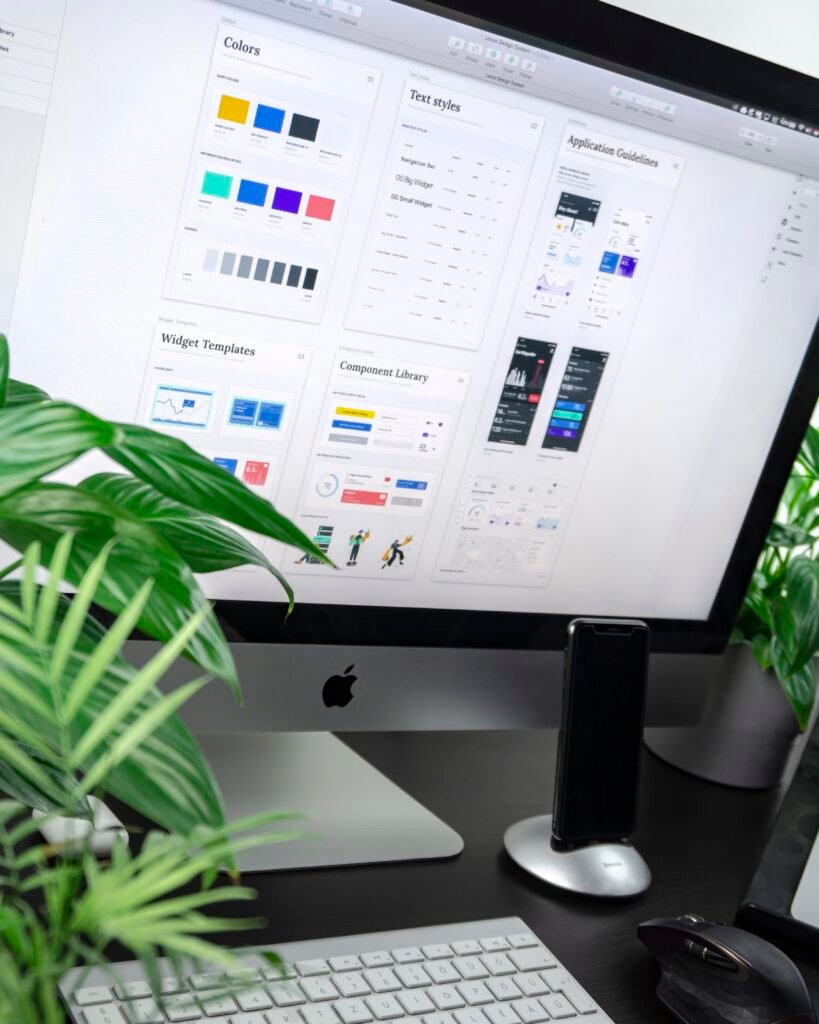If you’ve ever wanted to create your own coloring pages, look no further! In this article, you will discover step-by-step instructions on how to design captivating and unique coloring pages. Whether you are an artist looking to explore a new medium or a parent wanting to create a fun activity for your kids, these tips and tricks will guide you through the process, allowing you to unleash your creativity and design stunning coloring pages that will bring joy to both young and old alike. So grab your pencils and let’s dive into the world of coloring page design!
Choosing a Theme
When designing coloring pages, the first step is choosing a theme that will engage and inspire your audience. Consider what subjects might be popular and enjoyable for people to color. From animals to landscapes to abstract patterns, the possibilities are endless. Think about the interests and preferences of your target audience and how you can incorporate those into your designs. By selecting a theme that resonates with your audience, you can ensure that your coloring pages will be eagerly embraced.
Selecting a Subject
Selecting a subject for your coloring pages is crucial in capturing the interest of your audience. Whether it’s cute animals, majestic landscapes, or intricate mandalas, the subject should be visually appealing and suitable for coloring. Think about what types of images are trending and popular among people who enjoy coloring. Take into account the age group you are targeting, as this will influence the complexity and style of your illustrations.
Considering Target Audience
Understanding your target audience is essential in creating coloring pages that will appeal to them. Consider the age range, gender, and interests of your audience. For children, vibrant and simple designs with their favorite cartoon characters or animals may be ideal. However, for adults, intricate and detailed patterns might be more appealing. Keep in mind the preferences of your audience to create coloring pages that are tailored to their desires.
Identifying Popular Trends
To design coloring pages that stand out, it is important to stay up-to-date with popular trends. Keep an eye on what types of images are trending in social media, online communities, and in the coloring book market. This research will provide inspiration and help you understand what themes and styles resonate with your target audience. By incorporating popular trends into your designs, your coloring pages will have a higher chance of capturing the attention of coloring enthusiasts.
Gathering Inspiration
Designing coloring pages is a creative process, and gathering inspiration is a crucial part of that process. Here are a few ways you can find inspiration for your designs:
Exploring Online Resources
The internet is a treasure trove of inspiration for coloring page designers. Browse websites, blogs, and social media platforms dedicated to coloring or illustration. Explore websites that offer free stock photos or illustrations, as these can provide you with ideas and inspiration for your own designs. Pinterest, Instagram, and online art communities are also great places to discover new trends and creative approaches.
Visiting Local Bookstores or Libraries
Local bookstores and libraries are fantastic resources for finding inspiration for your coloring pages. Browse through coloring books and art books, paying attention to the styles, subjects, and techniques used. Take note of what colors are commonly used and the level of complexity in the designs. By immersing yourself in the world of coloring books, you can get inspired by the work of other artists and incorporate those ideas into your own creations.
Attending Art Exhibitions
Art exhibitions can be a great source of inspiration for coloring page designers. Visit local art galleries or museums to see a wide range of artistic styles and techniques. Observe the use of colors, the play of light and shadow, and the level of detail in the artwork. Art exhibitions allow you to expand your horizons and expose yourself to different artistic perspectives, which can greatly influence and enhance your own coloring page designs.

Creating the Outline
Once you have gathered inspiration and have a clear idea of the theme and subjects for your coloring pages, it’s time to create an outline. This will provide a structured framework for your designs and ensure consistency throughout your coloring book. Here’s how you can go about creating the outline:
Determining the Page Layout
Decide on the size and format of your coloring book pages. Consider factors such as the printing options available to you and the preferences of your audience. Common page sizes for coloring books are 8.5×11 inches or A4. Determine whether you want your pages to be single-sided or double-sided, keeping in mind that double-sided pages may require more planning to prevent colors from bleeding through.
Sketching the Basic Shapes
Start by sketching the basic shapes of your designs. Use light pencil strokes to outline the main elements of your drawings. Pay attention to the composition and placement of different elements on the page. This initial sketching phase allows you to experiment with different layouts and make adjustments before adding more detailed elements.
Adding Details and Patterns
Once you have the basic shapes in place, it’s time to add details and patterns. This is where your creativity truly shines. Whether it’s intricate patterns, textures, or shading techniques, carefully consider how to enhance your designs with these elements. Pay attention to the balance between simplicity and complexity, ensuring that your coloring pages will be enjoyable for your target audience.
Choosing the Color Palette
Selecting the right color palette can greatly impact the overall look and feel of your coloring pages. Here are some factors to consider when choosing a color palette:
Considering Color Psychology
Colors evoke emotions and create different moods. Consider the emotions you want your coloring pages to convey and choose a color palette accordingly. For example, warm tones like reds and yellows can create a cozy and inviting atmosphere, while cool tones like blues and purples can evoke a sense of calm and tranquility.
Using Analogous or Complementary Colors
Analogous colors are those that are adjacent to each other on the color wheel, while complementary colors are opposite to each other. Experiment with different combinations to find a harmonious color palette that enhances the visual impact of your coloring pages. Analogous colors can create a soothing and cohesive look, while complementary colors can add vibrancy and contrast.
Creating Variations for Different Components
Consider creating variations of your color palette for different components within your coloring pages. This can add visual interest and prevent the designs from becoming monotonous. For example, you might choose a different color scheme for backgrounds, main subjects, and smaller details. By carefully selecting and coordinating colors, you can bring your designs to life.

Selecting the Medium
The medium you choose to create your coloring pages will greatly influence the end result. Here are three popular options to consider:
Pencil and Paper
The traditional approach of using pencil and paper offers a hands-on and tactile experience. You can sketch your designs and then use a variety of coloring tools such as colored pencils or markers. This method allows for easy corrections and adjustments and can be a great option for those who enjoy the process of drawing by hand.
Digital Design Software
Digital design software such as Adobe Photoshop or Illustrator offers a wide range of tools and possibilities for creating coloring pages. This option provides more flexibility and the ability to easily make changes or experiment with different colors and patterns. It also allows for easy reproduction and modification of your designs.
Paints and Brushes
For those who prefer a more traditional artistic experience, using paints and brushes can be a wonderful option. Watercolors, acrylics, or even gouache can create vibrant and textured coloring pages. This method can be particularly effective for landscapes or more abstract designs. Keep in mind that this approach may require more time and resources for materials and setup.
Creating Contrast and Variety
To make your coloring pages visually appealing, it’s important to create contrast and variety within your designs. Here are some techniques you can use:
Playing with Light and Dark Shades
By incorporating light and dark shades, you can create depth and dimension in your coloring pages. Adding shadows and highlights can make the elements pop off the page and give a sense of realism to your designs. Experiment with different shading techniques to achieve the desired effects.
Adding Texture and Patterns
Texture and patterns can add interest and complexity to your coloring pages. Consider incorporating different textures such as fur, wood grain, or fabric patterns. Patterns can range from simple geometric shapes to intricate and detailed designs. These elements can make your coloring pages more engaging and enjoyable to color.
Using Different Stroke Thickness
Varying the thickness of your lines can add visual interest and create a dynamic look in your coloring pages. Thicker lines can define the main elements, while thinner lines can add detail and intricacy. Experiment with different pen or brush sizes to see how they affect the overall appearance of your designs.

Adding Complexity Levels
To cater to a wide range of coloring abilities, consider adding complexity levels to your coloring pages. This allows beginners, intermediate colorists, and advanced artists to find designs that suit their skill levels. Here’s how you can approach this:
Creating Simple Designs for Beginners
For coloring enthusiasts who are just starting out, it’s important to provide designs that are simple and easy to color. Opt for larger, less intricate shapes and fewer details. This ensures that beginners can complete a coloring page without feeling overwhelmed, encouraging them to continue exploring their creativity.
Including Intermediate Difficulty Pages
Intermediate difficulty pages strike a balance between simplicity and complexity. These designs can include more detailed elements and patterns, providing a bit more challenge for those who have mastered the basics of coloring. Consider adding variations in line thickness or more intricate patterns to provide a stepping stone for skill progression.
Developing Advanced Coloring Sheets
For advanced colorists or those who crave a challenge, offer coloring pages with highly detailed and intricate designs. These pages can include smaller elements, intricate patterns, and fine details that require more patience and precision. Providing advanced coloring sheets allows experienced artists to truly immerse themselves in their craft.
Incorporating Interactive Elements
Add an extra layer of fun and engagement to your coloring pages by incorporating interactive elements. Here are a few ideas to consider:
Adding Hidden Objects or Images
Including hidden objects or images within your coloring pages adds an element of surprise and discovery. Create a seek-and-find experience by hiding small illustrations throughout your designs. This encourages colorists to closely examine every detail and adds an exciting game-like aspect to the coloring process.
Including Puzzles or Games
Get creative by integrating puzzles or games into your coloring pages. Consider adding mazes, word searches, or connect-the-dots activities that are related to the theme of the design. This allows colorists to challenge their skills and provides an additional source of entertainment.
Designing Flip Book Pages
Flip book pages offer a unique interactive experience for colorists. Create pages with multiple elements or characters that can be flipped to reveal different poses or actions. This adds movement and dynamism to your coloring book and allows colorists to create their own animations.
Testing and Improving
Before finalizing your coloring pages, it’s important to test and gather feedback to ensure they meet the expectations of your audience. Follow these steps to ensure the quality of your designs:
Printing Sample Pages for Coloring
Print sample pages of your designs and color them yourself or invite others to test them out. This firsthand experience will help you identify any issues with the layout, clarity, or complexity of your designs. It will also allow you to evaluate how effectively your chosen color palette works.
Asking for Feedback from Testers
Reach out to friends, family, or members of your target audience to get their feedback. Ask them about their coloring experience, their thoughts on the designs, and if they encountered any challenges. This feedback will be invaluable in refining your designs and making necessary adjustments before publication.
Making Necessary Adjustments
Based on the feedback you receive, make any necessary adjustments to your coloring pages. This could include simplifying or clarifying certain elements, adjusting color choices, or addressing any issues with the layout. By taking the time to make improvements, you can ensure that your coloring pages are of the highest quality.
Adding Finishing Touches
Before your coloring pages are ready for publication, take the time to add those final touches that will elevate the overall design:
Cleaning Up the Design
Review your coloring pages and make sure all lines and shapes are clean and free of any unintentional marks or smudges. Use an eraser or digital editing tools to remove any unnecessary lines or stray marks. This attention to detail will give your coloring pages a polished and professional look.
Checking for Errors or Smudges
Inspect your coloring pages for any errors, such as spelling mistakes or inconsistencies in line thickness. Check for any smudges or areas where colors may have bled outside the intended boundaries. Taking the time to double-check these details will ensure that your coloring pages are pristine and ready for publication.
Preparing the Pages for Publication
Once you are satisfied with your coloring pages, ensure they are ready for publication. This may involve scanning or digitizing your designs for online distribution, or preparing them for printing by adjusting image resolutions and formats. Consider packaging your coloring pages as a cohesive collection or creating a cover design that reflects the overall theme of your book.
In conclusion, designing coloring pages is a delightful creative process that requires careful consideration of theme, audience, and trends. By gathering inspiration, creating an outline, choosing a color palette, selecting the medium, and incorporating interactive elements, you can create coloring pages that captivate and engage colorists of all ages and skill levels. Through testing, feedback, and the addition of finishing touches, you’ll perfect your designs and prepare them for publication. So, let your creativity flow and have fun designing coloring pages that will bring joy and relaxation to all who color them.
















